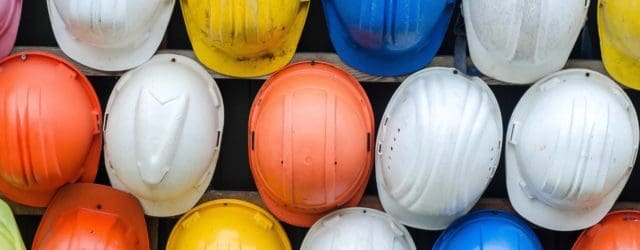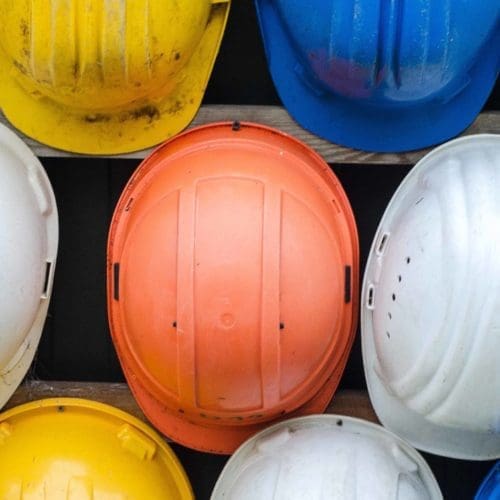The draft Building Safety Bill – changes afoot?
December 2020In July 2020, following a consultation on proposals for reforming the building safety system¹, the government published the draft Building Safety Bill (“the Bill”). In an article earlier this year (linked here) we considered the provisions included within the Bill, which is intended to reform the building safety system following the Grenfell Tower fire in June 2017.
Since publication of the draft Bill, the Housing, Communities and Local Government (HCLG) Parliamentary Select Committee (“the Committee”) has carried out pre-legislative scrutiny, including the review of 430 written submissions and oral evidence from 21 industry experts. The Committee’s report was published on 24 November 2020. In this article we consider the principal issues raised and considered in that report and some of the Committee’s proposals for amendments to the Bill.
General concerns
The Committee welcomes the Bill as a significant step towards remedying flaws in the current building safety regime. It notes, however, that in general the Bill lacks detail and relies heavily on the future introduction of secondary legislation. Concerns are raised, in particular, as regards the timing of the new measures included in the Bill. Some of the new duties and responsibilities are onerous, and time is therefore needed in order to effect a strong transition. As such, the Committee recommends that the government publish a clear timetable alongside the Bill.
Concerns are also raised about scope of the Bill. It applies to all “higher-risk” buildings, but submissions received by the Committee during the course of the pre legislative inquiry show much disquiet about the current definition of “higher risk”. For now, “higher risk” means buildings more than 18 metres /6 storeys high and buildings that have two or more dwellings, or 2 or more rooms used for residential purposes, or student accommodation. The Committee notes the government’s intention to extend the scope of the Bill further down the line (so there will be criteria for “higher risk” other than height), and recommends that the ability of residents to evacuate the building should be the principal factor when assessing risk. The Committee also recommends that regard should be given to the vulnerability of residents and the number of means of egress.
Leaseholders and the Building Safety Charge
The Bill introduces a Building Safety Charge (“the charge”) payable by tenants with long leases to enable the recovery of costs incurred by the landlord in the monitoring and management of building safety. This will be separate from the normal service charge and will cover costs incurred, for example, carrying out building safety work, appointing a building safety manager etc.
The pre-legislative enquiry has raised concerns regarding the extent to which the charge will include the costs of remediating historic safety defects, for which leaseholders were not responsible and may have predated their occupation. The report notes:
“The Government must recommit to the principle that leaseholders should not pay anything towards the cost of remediating historical building safety defects, and, in order to provide leaseholders with the peace of mind they deserve, amend the Bill to explicitly exclude historical costs from the building safety charge.”
The report recommends that the government should make proposals for funding all historic building safety remediation work, which the Committee concludes should be by way of payment from the government or from developers responsible for the defective work. In relation to the latter, the report proposes legislation placing a duty on builders to exercise care to avoid economic loss, with 10 years’ retrospective effect, thus overriding any issues that might arise where the six-year limitation period in which to bring claims against the developer has expired.
Design and Construction
The duty holder regime
In a similar way to the Construction (Design and Management) Regulations 2015 (“CDM Regulations”), the Bill provides for the appointment of duty holders (to include the client, the principal designer at the design phase, the principal contractor in the construction phase and the accountable person (usually the owner) at the occupation stage). Duty holders will be required to submit key information to the new Building Safety Regulator at three “gateway points”: the planning application stage, initial building control stage, and completion of the works before occupation takes place. The information provided by the relevant duty holder will need to demonstrate how the building, once built, will comply with Building Regulations.
The Committee’s report notes that confusion may arise as regards the distinction between the role of principal designer under the CDM Regulations and the role of principal designer in the duty holder regime. It recommends redefining the role of principal designer under the regime making this explicit either in the Bill or in secondary legislation to be published alongside it.
The report also recognises that duty holders at the design and construction phase could struggle to access professional indemnity insurance. The Committee suggest that “early publication of the general duties of duty holders could help to alleviate concern in the industry and facilitate the development of appropriate insurance products.” It recommends government consultation with the insurance industry and proposes that the Bill should be introduced only when there has been a thorough evaluation of the availability of adequate insurance for all duty holders.
Accreditation
The report recommends that the Bill should include provision for a national system of third-party accreditation and registration for all professionals working on the design and construction of “higher risk” buildings.
Duty holder choice/registration of building control professionals
Currently anyone undertaking building work can choose their own building control body, be that a local authority or private building control body. The Bill removes the ability of duty holders to choose their own building control body in respect of “higher-risk” buildings. Instead, only the new Building Safety Regulator can be the building control authority for such work. The evidence submitted to the inquiry conveyed great concern about the Bill’s failure to remove duty holder choice and competition entirely from the building control sector as a whole, and not just in respect of “higher risk” buildings. The Committee therefore recommends that duty holder choice be removed entirely from the building control system and replaced by a system of independent appointment, provision for which should be included in the Bill or in secondary legislation.
Occupation
Once a building is occupied, the duty holder will become the ‘accountable person’, responsible for the safety once people are living in the building. The accountable persons will be required to appoint a Building Safety Manager for every “higher risk” building in the country. This Building Safety Manager will be responsible for ensuring the building meets the requirements of the new regulator.
There is concern as regards the lack of any detail as regards the type of actions that will fall within the accountable person’s remit/responsibilities. Issues arise, in particular, as to how the accountable person regime will operate in the case of multiple and complex ownership structures, where there could be multiple accountable persons. The Committee recommends imposing a duty to co-operate in such a case. There is also concern as regards the relationship between accountable persons and responsible persons under the Fire Safety Order 2005, and the Committee has recommended that the government issue further guidance as regards this interrelation of roles. There is also a suggestion that, long term, the government should consider simplifying/consolidating the two pieces of legislation.
The Committee notes the need for a competence framework for the role of Building Safety Manager in order that the industry can begin to recruit and train individuals to fill the role. To that end, the Committee suggests that the government should clarify the full details of the framework it does intend to adopt and/or provide for a national system of accreditation to agreed common standards and for a central register of Building Safety Managers. Here again, the lack of clarity around the respective responsibilities, and therefore liabilities, of the accountable person and the Building Safety Manager
are a cause for confusion and concern.
As with the duty holder role, securing appropriate professional indemnity insurance for a Building Safety Manager might well be an issue. The Committee again recommends that the government should work with the industry to facilitate the design of appropriate insurance products. In particular, it suggests that making available the competence framework and the precise responsibilities of the Building Safety Manager will assist with this task.
Construction Products and Supplementary Provisions
Whilst the Bill includes provisions for regulating construction products, it contains little detail, especially on the future testing regime. The Committee therefore recommends further transparency including:
- Publication of proposals for the product testing regime.
- Provision for the publication of test failures and re-run tests.
- The introduction of an independent system of third-party certification.
- Government funding to increase testing capacity.
Summary
The motivation behind the Bill, and the introduction of measures designed to improve current building safety standards, is of course to be welcomed. However, it is clear from the Committee’s pre-legislative scrutiny of the Bill that considerable clarification and change is required if the Bill is to successfully achieve its aims. Most notable perhaps is the current absence of detail as to the future scope of the Bill, the timing of its implementation and the current failure to address the funding of historic building defects. We await the government’s response to the consultation with interest and will provide a further update when we have clearer idea of how the Bill (and ultimately the Building Safety Act) is likely to look in its final form.
¹Building a Safer Future: proposals for reform of the building safety regulatory system
Download PDF









